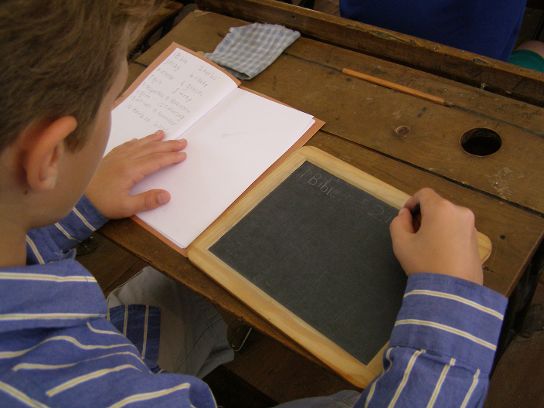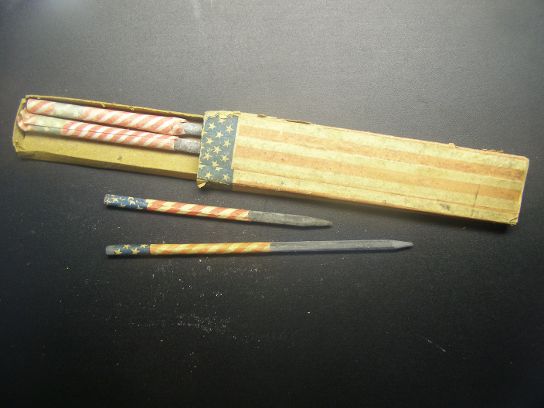REHOBOTH, MA: THE HORNBINE SCHOOL
Story By Dave Downs

In the nineteenth century, school children in Rehoboth used slates to practice handwriting and arithmetic without wasting precious paper. The board was made from a piece of quarry slate set in a wooden frame. They were personal-sized blackboards. Often, students wiped away their work, using the cuff of their sleeve, after it was checked by the teacher. This process is the origin of the phrase ‘to wipe the slate clean’, which we still use to mean to make a new start, or to forget the things that have gone before.
A slate pencil (not chalk) was used to form the letters. Slate pencils were made of soapstone or softer pieces of slate rock, sometimes wrapped in paper. Many Palmer River students remember the sound of the slate pencil, “…like nails on a chalkboard…” when they visited the Hornbine School for a day. Many 19th century children would sharpen their slate pencils on the school wall.

These slate pencils are wrapped in paper decorated like the American flag and stored in a cardboard box with an American flag design. In the United States, slate pencils were manufactured at least as early as 1844 and at least as late as the 1910’s. A Vermont company produced up to 100,000 pencils a day, which were shipped throughout the world in the mid 19th century. By the end of the Civil War, slate pencil manufacturing began to wane as wood and graphite pencils took over the marketplace.
Visit The Hornbine School any 2nd or 4th Sunday in August or September and try out a slate pencil for yourself. It’s a unique experience. Our one room schoolhouse is located in the south east corner of Rehoboth at 144 Hornbine Road across from Baker Street.
We are open from 2-4 P.M. on the following dates. August 11th & 25th and September 8th & 22nd
